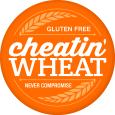- Dec 13, 2016
Writing my journey to being a gluten free pastry chef got me thinking about the research I initially did upon diagnosis. I attended local chapter Celiac Support Association meetings, researched the internet and perused any book I could get my hands on. And although there was information to be found, I am stunned by the amount of data available today; just 7 years later! It can get overwhelming. So, in order to help sift the wheat from the chaff, ha, here are some important things to know.
Celiac Disease is an immune disorder.
If you are like me, you accept this statement as fact but don't really know what it means. So, according to the US National Library of Medicine, "Autoimmune disorders occur when the immune system malfunctions and attacks the body's own tissues and organs. With...chronic exposure to gluten, inflammation resulting from immune system over activity may cause a wide variety of signs and symptoms involving many parts of the body."
Celiac Disease damages the villi in the small intestine.
In order to understand why this has such a negative impact on health, you have to understand a little more about villi. These are small, finger-like projections that line the small intestine and provide a lot of surface area to absorb nutrients. In celiac disease, the villi become shortened and eventually flatten out rendering them ineffective.
Chronic inflammation and poor nutrient absorption can lead to diverse health problems.
Gastrointestinal distress is not the only, and not even the most frequent, symptom of Celiac Disease or gluten sensitivity. In fact, the list of possible symptoms is creepily diverse and includes:
- Iron deficiency and anemia
- Vitamin deficiencies
- Lowered bone density or osteoporosis
- Skin rashes and other dermatitis issues
- Chronic fatigue
- Joint pain
- Poor growth or "failure to thrive"
- Migraine headaches
- Depression
- Attention deficit hyperactivity disorder (ADHD)
In fact, according to the Celiac Disease Foundation, there are over 200 possible symptoms for Celiac Disease. With this many disparate and varied health problems, it is easy to see why it can be a chameleon to diagnose.
Celiac Disease has a genetic component.
Celiac disease cannot be "caught," but rather the potential for Celiac Disease is in the body from birth. The genes that predispose to this condition exist in the family of genes for proteins referred to as human leukocyte antigens, or H.L.A. Since
genetics plays a determining role, Celiac disease tends to cluster in families. For example, first degree relatives of people with Celiac Disease have between a 4 and 15 percent chance of developing the disorder. It is unclear exactly what activates the disease, however, if you do not have the genetic marker, it is highly unlikely you can have Celiac Disease. Medscape has a helpful article entitle Genetics of Celiac Disease.
The treatment for Celiac Disease is strict adherence to a gluten free diet.
'Nuf said.
Gluten occurs in more foods than just wheat.
Gluten is a combination of two proteins, glutenin and gliadin, that are found in wheat and related grains such as spelt, barley and rye. Although it is obvious when a product is made using wheat flour, gluten exists in our food system in many forms. You must scrutinize all labels for things such as binders, malt, natural and artificial flavorings, modified food starch, etc. New food labeling laws are making it easier to determine what is in that packaged product. The FDA requires manufacturers to list all of the top eight allergens when present. They include milk, eggs, fish, Crustacean shellfish, tree nuts, peanuts, wheat and soybeans. It is important to note that barley, rye and oats will not be called out and these may be sources of gluten in the product.
A gluten free diet is not for everyone.
This sounds like a big duh, but let me state for the record that gluten is not inherently evil. Being gluten free is a personal choice and there are a variety of reasons to ditch gluten. The bottom line is to listen to your body and create a balanced diet for yourself. Consider going gluten free if you think you’re suffering from a gluten intolerance, but get tested and do your research first!
Understanding the methods of testing for Celiac Disease can be confusing.
Since I am a pastry chef and not a doctor, I am not the best person to help clarify. However, there is a great FAQ that exists on the Beth Israel Deaconess Medical Center site. I encourage you to visit the page.
Things you should consider when transitioning to a gluten free diet.
Know your gluten alternatives. Know the common pitfalls of the diet. There are a variety of grain, flour and starch alternatives that do not contain gluten such as brown, white and wild rice, coconut flour, corn, corn starch, millet, pea flour, potato flour and quinoa, for starters. Wheat-free does not mean gluten free! Whenever possible, choose food stuffs that are labeled gluten free and are also certified by a third party. Maintain a balanced diet. Avoid overly processed foods. In addition to choosing gluten free grains, fill in the rest of your diet with naturally gluten free foods such as fruits, vegetables, and lean proteins. Thankfully, the ‘trend’ of a gluten free lifestyles has resulted in a booming industry full of options to maintain your lifestyle. Be healthy - and keep baking!





 Find our products
Find our products FAQs
FAQs Testimonials
Testimonials R&D Projects
R&D Projects